Ancient Eastern Wisdom and Mental-Neuronal Patterns

Eastern traditions have spoken for centuries about impermanence, balance, and Compassion. These traditions and modern neuroscience may appear far apart, yet they converge in surprising ways. This blog explores the alignment of Buddhism, Taoism, and Confucianism with the neuroscientific perspective on mental-neuronal patterns (MNPs). They meet in depth and meaning. [A comparative (extensive) table is Read the full article…
Small-World Networks

The brain is a self-organizing network with ‘small-world’ properties. This means it has highly clustered local connections for specialization and long-range shortcuts for efficient integration. This network structure allows for deep intelligence, flexible thinking, and even resilience against disease. Recent research confirms that small-world networks are central to brain function [*], shaping everything from cognition Read the full article…

The Broadness of Subconceptual Patterns
The concept of subconceptual patterns in the brain and their role in shaping cognitive and emotional experiences provides a key to understanding the complexity of the human mind. These patterns are distributed across networks of neurons/synapses, each of which does not represent any concept. See Patterns in Neurophysiology, where these patterns are called mental-neuronal patterns Read the full article…

Inner vs. Outer Change of Patterns
This is about mental-neuronal patterns. Although this term speaks of recent scientific insights, the known relevance is age-old and ubiquitous. It is also a basic choice for the future. All in the mind? ‘Inner vs. outer change’ is not about what happens inside or outside of one’s mind, but inside or outside of individual mental-neuronal Read the full article…

From Neurons to Neuronal Networks
Few people are aware that this scientific revolution is ongoing. Also, few people/researchers within the ongoing itself are aware of its revolutionary breadth. The neuron doctrine For a long time (since +/ 1880), it has been thought that the neuron is the structural, functional, and perceptual unit of the nervous system ― however, leading to Read the full article…

From Mirror Neurons to Mirror Brain
Seeing the brain as a ‘mirror brain,’ we can see how empathy plays a crucial role in many things mind-related. Empathy is not an add-on. The human thinking is basically empathic. This is an excerpt from [see: “The Journey Towards Compassionate AI.”]. (This blog text is no easy reading.) Some researchers see mirror neurons as Read the full article…

The Post-Postmodernist Brain
“because your experiences are unique, so are the vast, detailed patterns in your neural networks. Because they continue to change your whole life, your identity is a moving target; it never reaches an endpoint.” [1] This is a quote from a recent book on neurocognitive science. The book (and author) is top-notch in this domain. Read the full article…

Placebo and the Predictive Brain
The ‘brain as a predictive machine’ sheds an interesting light on the placebo effect. It shows that we are born with the wetware in place to experience the influence of placebo. Yet, the present-day may be the time to go beyond. Subconscious placebo Several explanations of the placebo effect have been put forward, such as Read the full article…
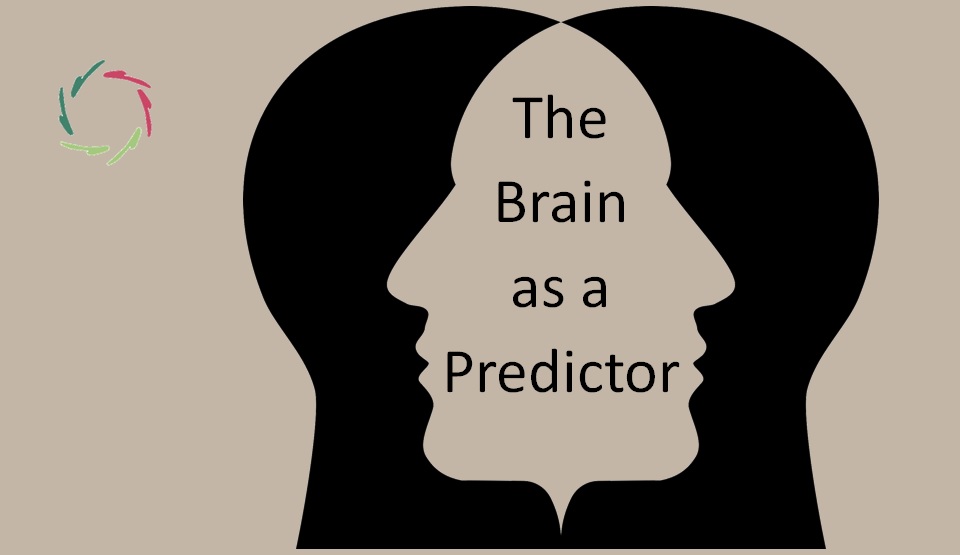
The Brain as a Predictor
Contrary to the impression that the brain runs behind its environment, passively capturing, then trying to influence it, the brain works much more as a predictor, using input from the environment mainly as feedback to its predictions. Please read: [see: “Patterns in Neurophysiology“] Brainy patterns ― Pattern Recognition and Completion (PRC) A neuronal/mental pattern is Read the full article…

The Stream of Non-Consciousness
The conscious train of thought may appear like a self-propelling stream of consciousness. The reality is different, carrying immense consequences. The image before the thousand words Please read on. The image and a few consequences will become clear by the end of the words. Constructed vs. fundamental reality The horizontal line in the middle schematically Read the full article…

Patterns in Neurophysiology
Mind-related concepts are not held by single neurons but by patterns of neurons. This is increasingly being visualized, carrying immense consequences. Neuronal ensembles (‘neuronal patterns’) The human brain is no clockwork. There is no database nor a collection of crisp, Platonian concepts. [see: “About Concepts”] There is no one concept present in one brain cell Read the full article…

Fluid Minds, Brains, Bodies
Minds change continually. Brains change continually. Bodies change continually. According to the chosen viewpoint: with many overlaps or influences. We like to think of ourselves as solid. Daily life gives that impression. We don’t change a lot day after day. We can think of ourselves as we were yesterday or last week, last year, and Read the full article…

Your Mind-Brain, a Giant Pattern Recognizer
It might still not be evident to you, dear reader, how an AURELIS session works, how it can have a substantial influence upon your body and mind. ►►► WHY read this? Deep insight into the structure of your mind makes you see the why and how of AURELIS sessions and more. ◄◄◄ I’m not going Read the full article…
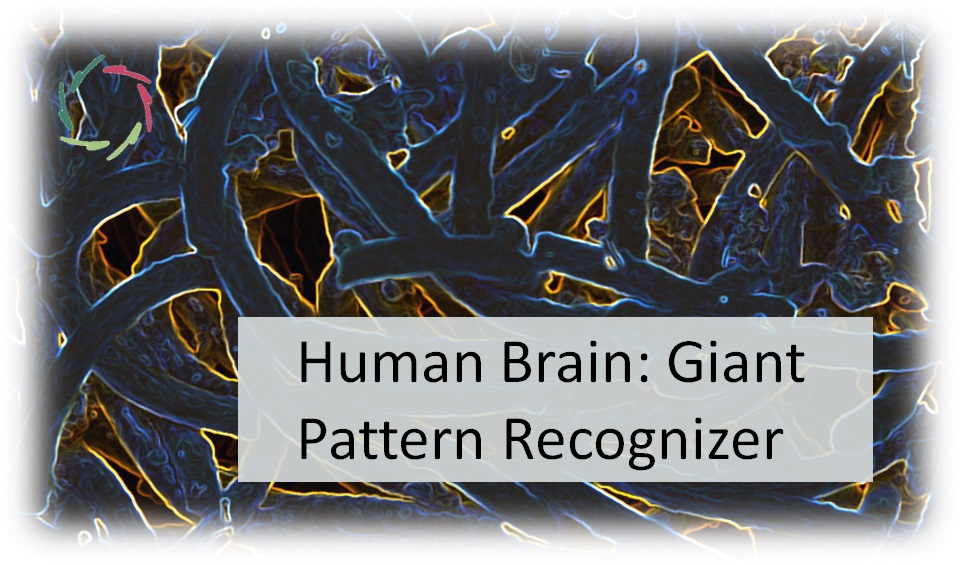
Human Brain: Giant Pattern Recognizer
The human brain does not process information in purely linear ways, like a serial digital computer. Instead of this, many things in the brain happen in parallel and coordinated ways simultaneously at many levels. No serial look-up Leaving any soul-stuff aside, people use(d) to think of the human brain as a kind of giant serial Read the full article…

The Brainy Trinity
The ‘triune brain’ is a popular concept: reptilian – mammalian – human. Yet the brain functions as a whole. This has huge implications. Evolution, no engineering Evidently, a mechanically engineered brain would be very different from the organically evolved one that we may call ‘home’ in the most literal sense. We are organic. Any naturally Read the full article…
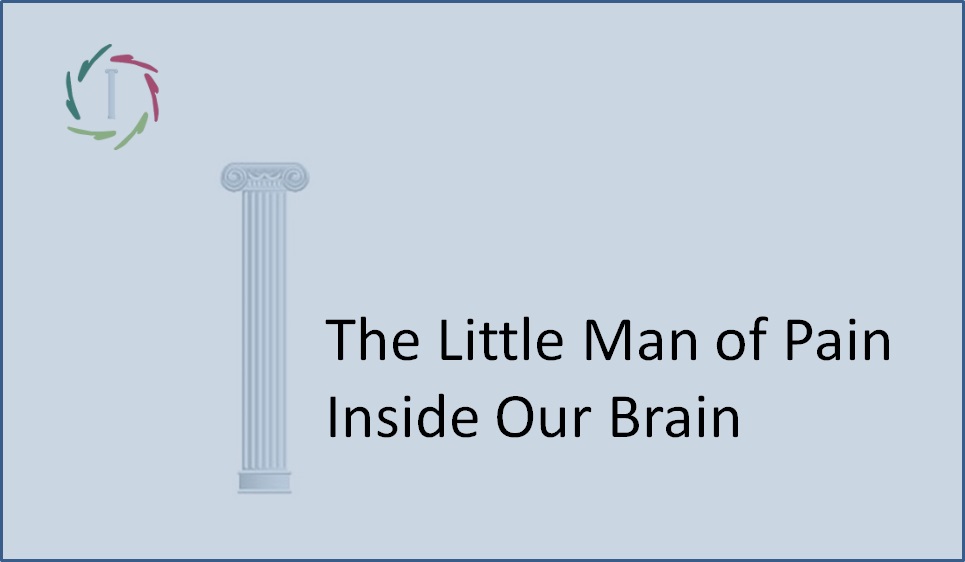
20. The Little Man of Pain Inside Our Brain
Pain Neuromatrix: science, no fiction R.Melzack, Nobel Prize winner on the basis of his Gate Control Theory, has subsequently also developed the Pain Neuromatrix theory. In this theory he locates even more the mechanism that produces pain – so the fact of ‘feeling’ pain – within the brain itself. The Pain Neuromatrix is a distributed Read the full article…
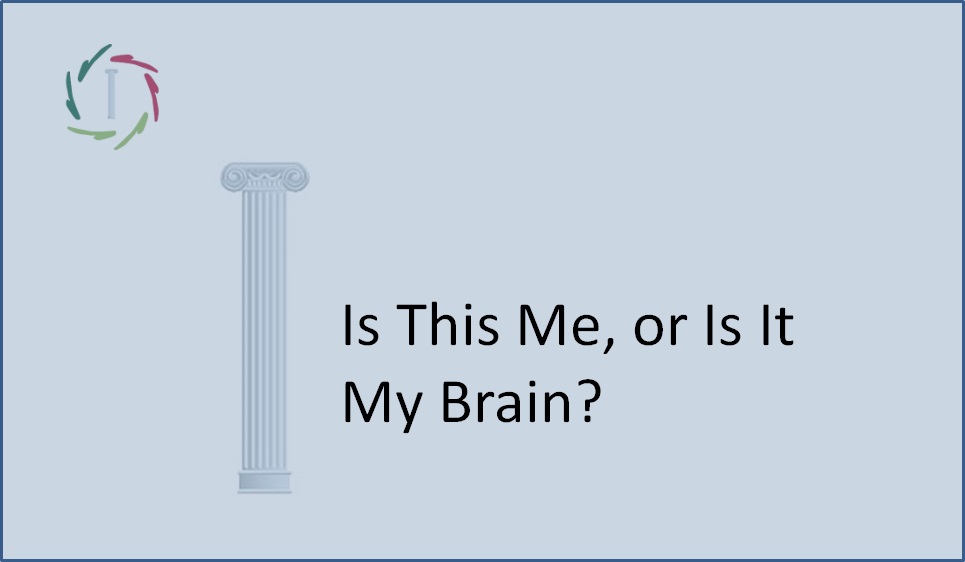
14. Is This Me, or Is It My Brain?
I use my brain, but who is ‘I’ without a brain? Is a brain an instrument of ‘I’? If this is the case, then is ‘I’ a kind of homunculus that is present somewhere in a separate box in the brain? In the Middle Ages it was thought that this was indeed the case. For Read the full article…
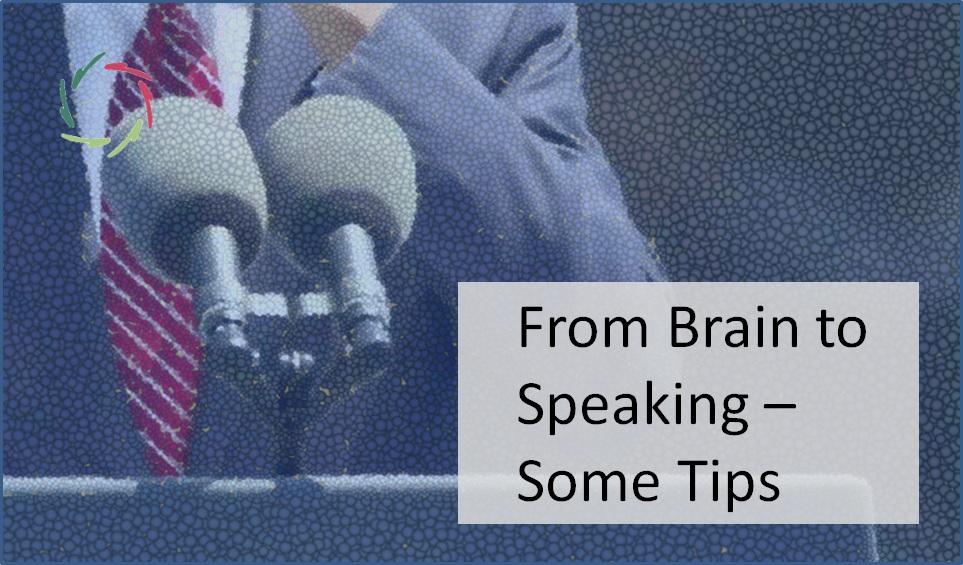
From Brain to Speaking – Some Tips
Insight in the brain does have practical consequences to a speaker. This text provides a few tips. It’s up to you to integrate them in who you are ‘from inside out’: see the first tip. But first: how to use these tips. You find the actual tips underlined. Please try to not just conceptually get Read the full article…

Public-Speaking Neuronal Patterns
The human brain contains +/- 100 billion neurons. There are 10.000.000.000.000.000 pulses between them per second, forming patterns of all sorts… a universe inside. The power of this is the main power of thinking… and speaking. [See: ‘About ‘Subconceptual’] Nonconscious to conscious At any moment, all mental patterns originate nonconsciously. Few of these get to Read the full article…

The Story-Telling Brainy Network
Slightly hypothetical: the brainy network that is activated when daydreaming, is also activated through story-telling, so important in public speaking. The ‘Default Mode Network’ (DMN) is the brainy network that people get into when they are neither asleep nor focused on a specific job. This mental mode is also baptized ‘mental time travel’. It’s important Read the full article…

Autosuggestion Changes Your Brain
Something that may hold someone back from really being able to put faith in the influence of autosuggestion on the body, is the idea: psyche is abstract – how can this have an impact on the physical, concrete body? This is a question that’s on many people’s minds since long and probably many people will Read the full article…

Are You Your Brain?
There is no simple answer to this question – but there is a very interesting one. Take the Mona Lisa by Leonardo Da Vinci. Let’s agree this is art. Now set it on fire. What remains are ashes. Yet nothing materially has vanished. The same atoms are present as there were in the Mona Lisa. Read the full article…
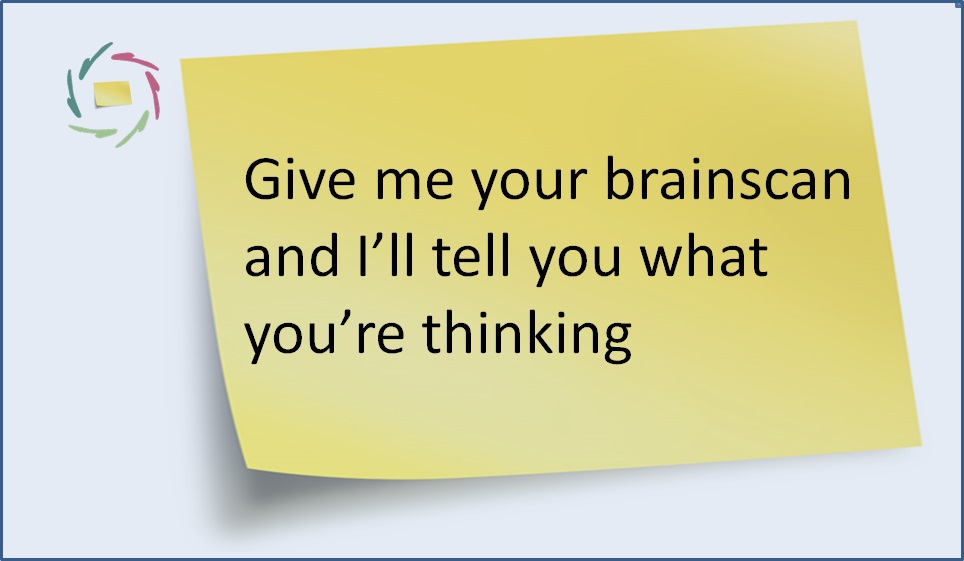
3. Give me your brainscan and I’ll tell you what you’re thinking
On a modern brainscan (PET, SPECT), researchers can see which parts of the brain are specifically active when a person is looking, feeling, imagining, visualizing, etc. One can of course look at this as ‘proof’ that everything psychological is based on a physical substratum. Mind-materialists do like this very much. Human mind in a mind-materialist’s Read the full article…